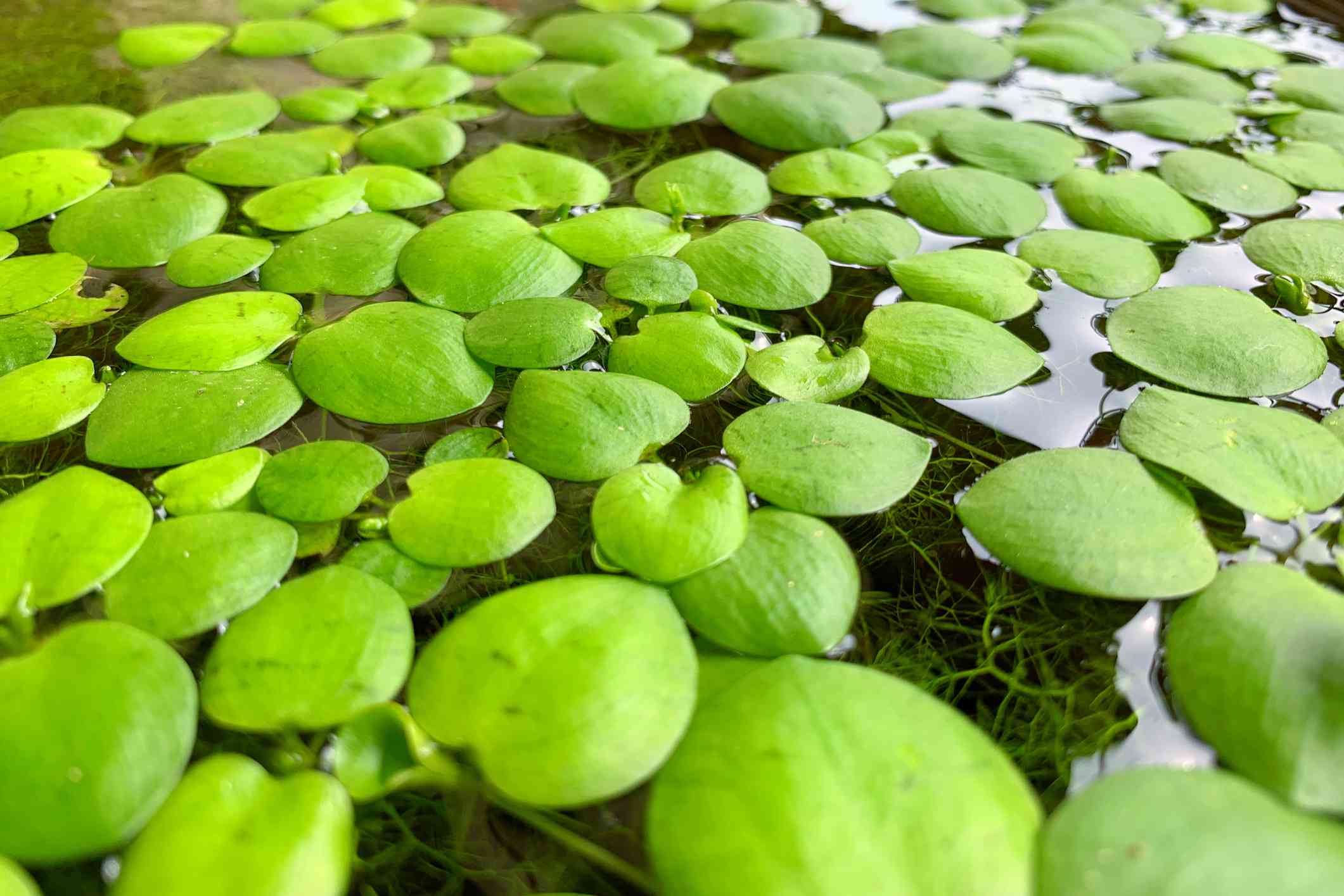Adding floating water plants is one of the best ways to enhance the health and appearance of your pond. Their trailing leaves and colorful blooms create visual interest, while also providing valuable benefits like shade, oxygenation, and water filtration.
When choosing floating plants for your pond, keep in mind factors like hardiness zone, sunlight needs, size, and growth rate. With the wide variety available, there’s sure to be great options to suit your pond. Here are some top picks to consider:
Useful Floating Plants for Small Ponds
Water Hyacinth – These exotic looking plants have lavender flower spikes and glossy, oval leaves. The bulbous leaf bases float just above the water surface. Water hyacinth help filter pond water and provide shade. They are fast growing, so may need frequent thinning.
Water Lettuce – Sometimes called rosette water lettuce, these plants form pretty rosettes of rounded, velvety green leaves. They help prevent algae by blocking sunlight penetration into the water. But left unchecked, they can quickly cover the pond surface.
Frogbit – Resembling miniature lily pads, frogbit has small, flat round leaves that float on the water’s surface. The roots hang down into the water to absorb nutrients. These help shade and oxygenate the pond.
Salvinia – This fast-spreading floating fern forms a dense mat of emerald green leaves covered with tiny hairs. Great for ponds with fish, it provides protective cover. But salvinia needs frequent thinning to keep it under control.
Azolla – Also called mosquito fern or fairy moss, azolla resembles a lush green carpet when it spreads across the pond’s surface. Its tiny leaf clusters offer refuge for young fish and frogs. Azolla helps prevent mosquito larvae.
Duckweed – These tiny plants are ideal for small ponds and water gardens. Resembling green polka dots, they provide food for fish and birds. Their dense growth suppresses algae. But you’ll need to scoop out excess duckweed regularly.
Colorful Floating Plants
Add a pop of color with these attractive flowering floaters:
Pickerel Plant – Named for its glossy heart-shaped leaves, this plant bears spikes of blue or violet flowers in summer It adds height, growing up to 3 feet tall Plant in baskets to contain.
Parrot’s Feather – Emerald green feather-like foliage trails over the water, accented by scarlet stems. Tiny white flowers bloom in summer. Parrot’s feather is lovely but spreads aggressively. Keep it contained.
Water Snowflake – Delicate greenish-white flowers resembling snowflakes appear in spring. This exotic plant has lacy floating leaves. Water snowflake multiplies quickly, so manage its spread.
Yellow Floating Heart – Bright yellow flowers with fringed petals open in summer over oval floating leaves. This heat-loving plant is hardy only in southern zones, where it may spread rapidly to cover pools.
Cardinal Flower – Tall spikes of brilliant red tubular flowers rise above lush green leaves from midsummer into fall. It thrives planted in wet soil at the pond edge. Attracts hummingbirds.
Grassy Floating Plants
For a natural look, try these grass-like floating plants:
Dwarf Papyrus – Resembling a miniature version of Egyptian papyrus, this plant has upright grassy foliage. Green heads mature to soft, airy tan seed heads. Grows 1-2 feet tall in water gardens.
Dwarf Horsetail Reed – Horsetail reed has stems ringed like bamboo, ending in cone-shaped clusters. Its reed-like greenery has a tropical look while helping filter pond water. Max height is 2 feet.
Umbrella Palm – Arching green leaves radiate from a center stem, reminiscent of an umbrella. Small greenish flowers appear in summer. Grows 1-2 feet tall. Tolerates shallow and deeper water.
Grass-leaved Arrowhead – This moisture-loving plant has long, slender, arrow-shaped green leaves that add texture and soft color. Small white flowers bloom in summer. It spreads by runners and ranges 1-3 feet tall.
Floating Plants to Use with Caution
Some beautiful plants have invasive tendencies in ponds. Enjoy their benefits, but keep a close eye on growth and spread:
-
Water Hyacinth – Can quickly cover the pond surface, starving other plants of sunlight.
-
Water Lettuce – Forms dense floating mats that should be thinned regularly to prevent excessive buildup.
-
Duckweed – Tiny leaves rapidly multiply to form a complete green carpet on quiet ponds.
-
Parrot’s Feather – Aggressive grower with tendency to escape confinement – do not plant in outdoor ponds.
Caring for Floating Pond Plants
To keep your floating water plants healthy and prevent overgrowth:
-
Site in full sun to partial shade as required by variety. Most demand at least 4 hours of direct sun daily.
-
Avoid overcrowding. Leave space between plants and thin as needed.
-
Remove old foliage and flowers to encourage new growth.
-
Scoop out excess plants before they cover more than 1/3 of the pond surface.
-
Check for underwater portions rotting. Remove any fouled or discolored leaves below water.
Adding the right mix of floating water plants enhances pond health while creating a beautiful aquatic garden. Their trailing stems and colorful blooms make ponds even more enjoyable. With a little maintenance to control spread, floating plants are sure to beautify your pond all season!
*TOP 10* Pond Plants YOU NEED TO HAVE!
FAQ
Can you have too many floating plants in a pond?
Do floating pond plants survive winter?
Do floating plants get rid of algae?
- The Ultimate Guide to Growing Strawberries in Raised Beds - August 8, 2025
- No-Dig Garden Beds: The Easiest Way to Grow a Beautiful Garden - August 6, 2025
- How to Protect and Preserve Wood for Raised Garden Beds - August 6, 2025

